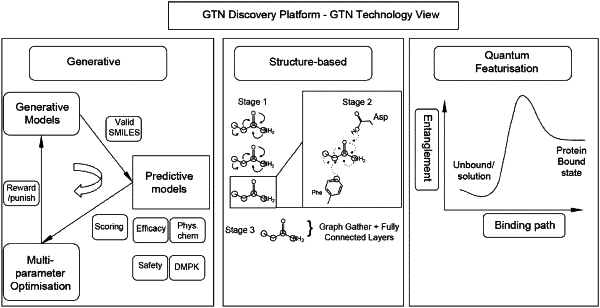|
1. A machine learning based method of identifying candidate, small, drug-like molecules, comprising the step of providing molecular orbital representations of drug-like molecules and/or parts of proteins relevant to an interaction with the molecules, as an input to a machine learning system, to predict molecular properties and identify candidate drug-like molecules, in which molecular orbital representations of drug-like molecules and/or parts of proteins relevant to an interaction with the molecules are represented as tensor networks in which the tensor network representations include networks describing states with volume law entanglement that allow for tensor networks describing density matrices, including both those that obey the area law, and those that do not, and arbitrary superpositions of tensor networks, containing elements in general from distinct types of architectures.
|
